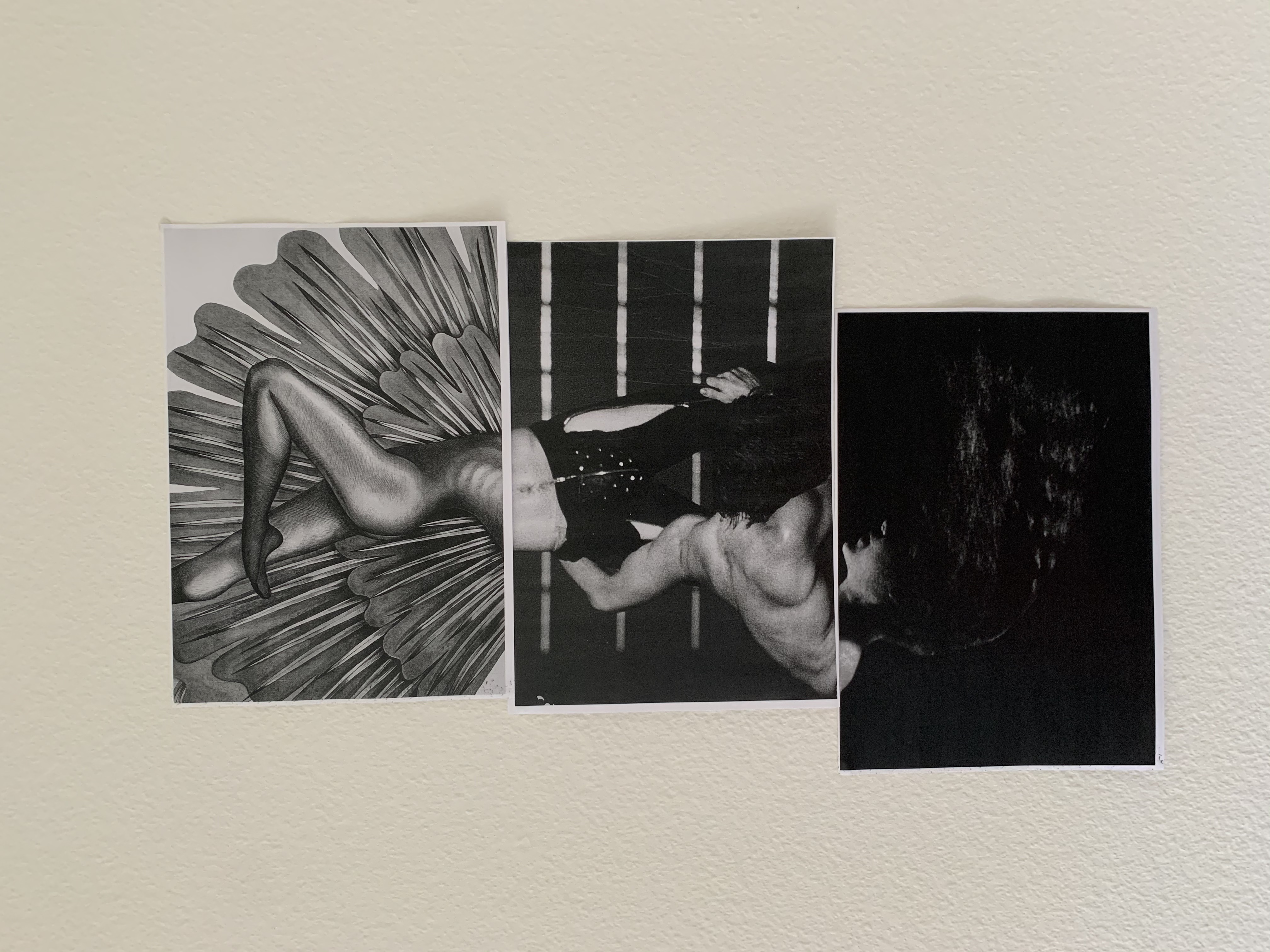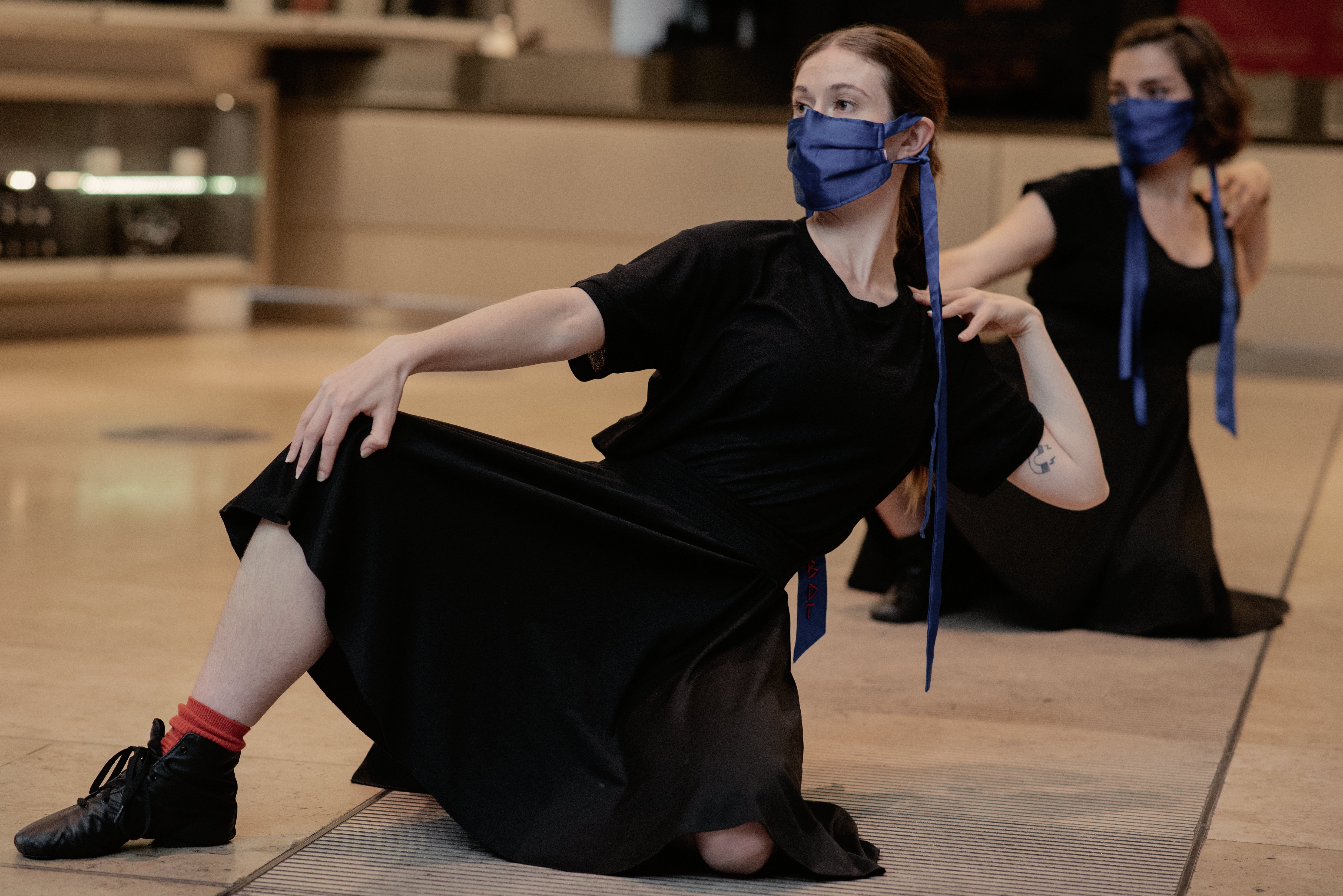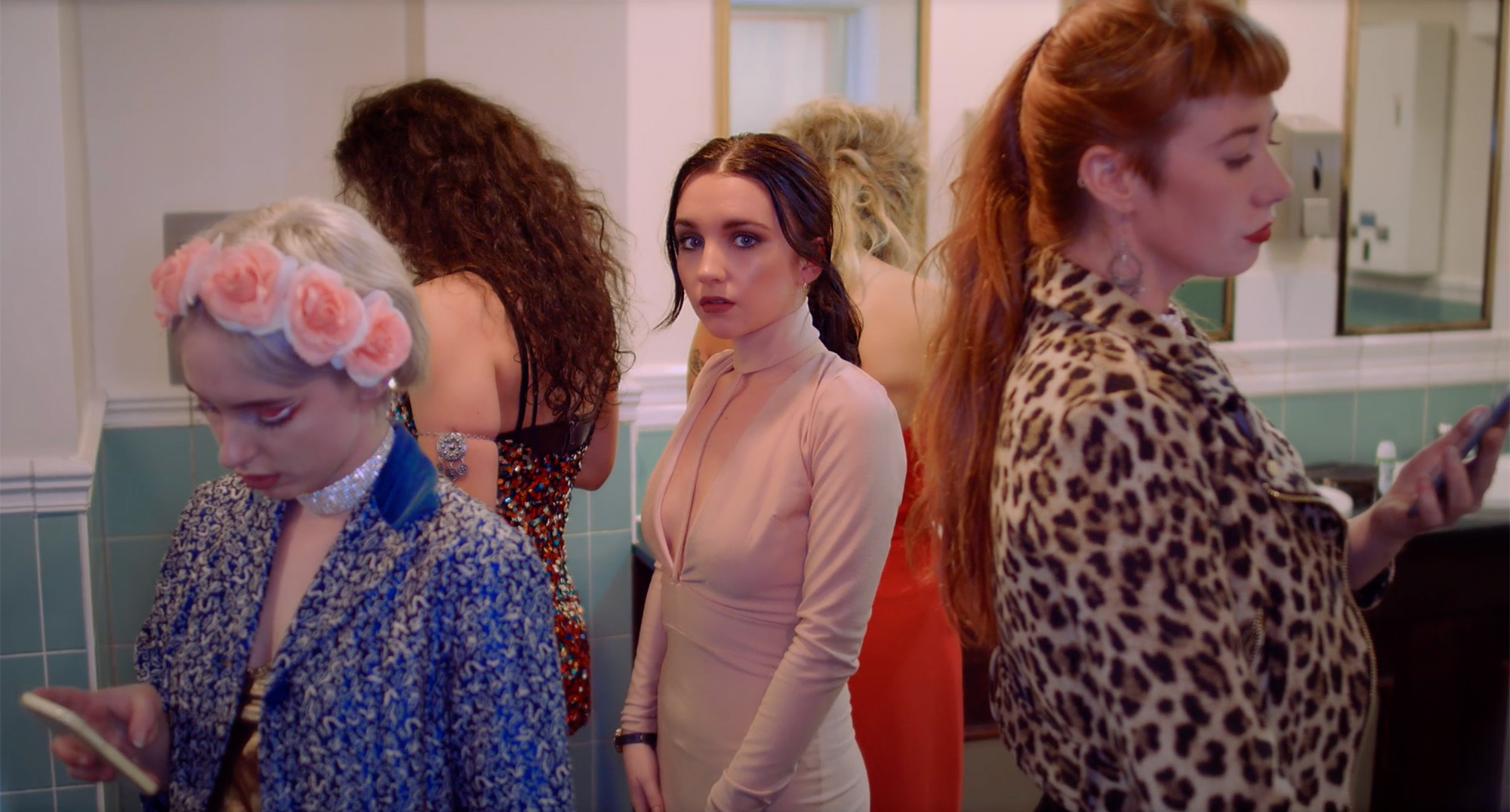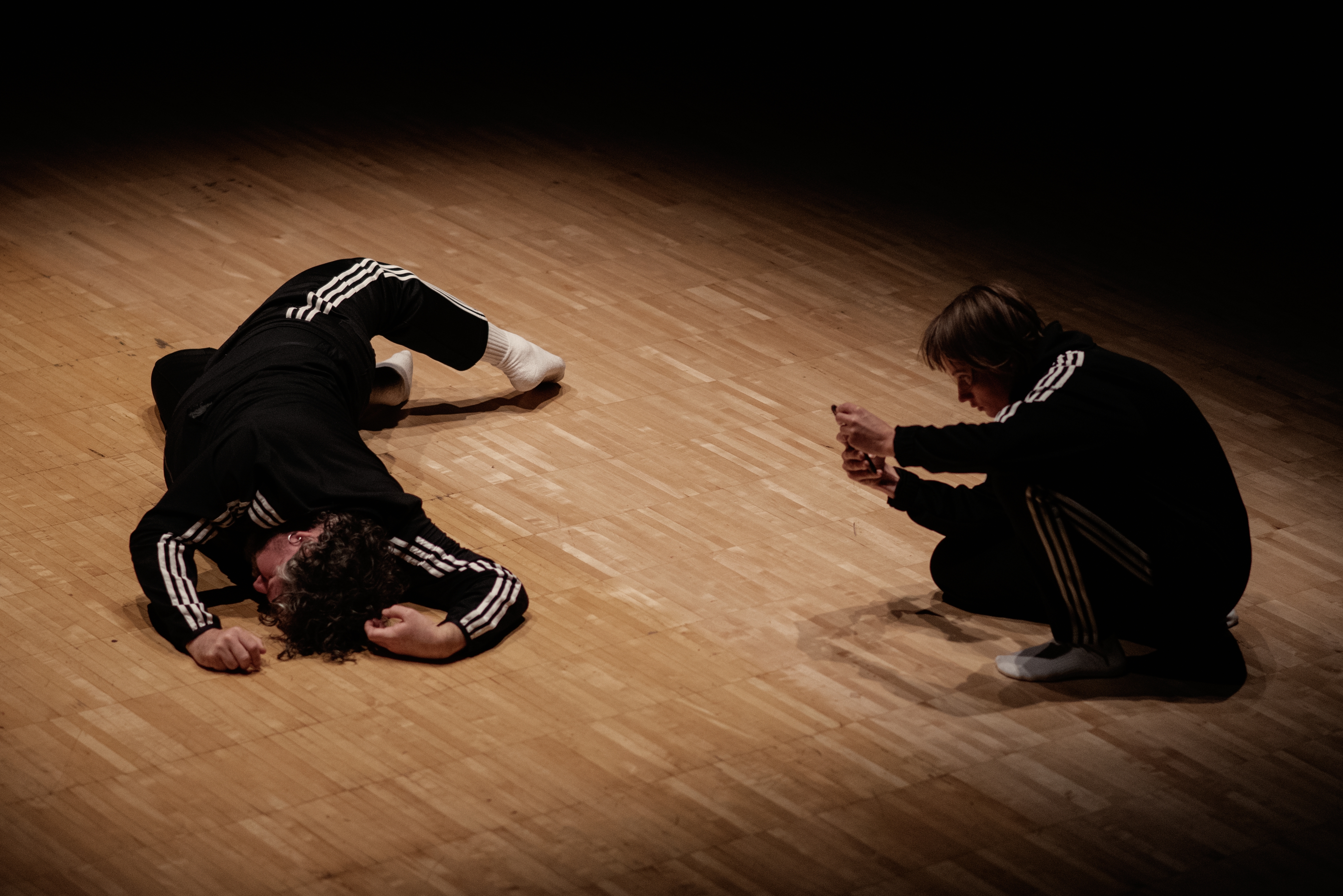Words by Katie Hagan. Experienced @ Sadler’s Wells 24/06/21.
As I reflect on my body is an exhibition curated by Christopher Matthews/formed view, I’m reminded of what a special and warm way it was to get back to the theatre, and indeed to experience such an alternative ‘show’ to the usual events at Sadler’s Wells.
Much has changed in the world over the past year and so has the dance industry’s macrocosm. The desire for stage work is still alive and wriggling, yet, as a mode of let’s say more immersive performance, my body is an exhibition touched my senses and made me feel part of a much-loved art form which I haven’t been able to experience IRL for what seems like an eternity. I am a very willing participant; I craved proximity and closeness after being denied it for so long. I was so delighted that my body is an exhibition facilitated that for me and so many of the other eager visitors!
With its moniker taken from the fierce-as-hell, I-wanna-put-on-some-heels/where’s-my-hairbrush Janet Jackson song ‘Feedback’ (I wish reviews could also play songs on cue!!) my body is an exhibition deliciously escorts you around the Sadler’s Wells building. It’s a seductive behind-the-scenes tour ft. live durational installations, visual art, looped videos and a lot of purple signage. The adventure, which I definitely saw as my first night-out in yonks, is feverishly exciting and daring.
I should probably point out that I did fan girl at the thought of going backstage during this exhibition. To be honest, over the course of this experience I was made to feel not at all embarrassed for taking selfies and getting caught up in its pop-py rapture. Indeed, what I loved about my body is an exhibition was its openness, its focus on this letting go of any imposter-syndrome and queering what is ‘normal’.
We start at the ground floor bar area with Fenia Kotsopoulou’s Purple Dance on the tv. In this film a dancer’s back is cast in a purple light. We see vertebrae work collectively to ripple to a delicate music-box symphony. The film doesn’t feel gendered specifically, but open and fluid.


Purple Dance sets a solid foundation for the exhibition’s departure from heteronormativity. Phoebe Berglund’s Quartet follows in the main foyer afterwards. Two dancers dressed in black, wearing jazz shoes (or boots?) have blue face masks on with tentacley tassels drooping from the sides. They do veryyyy slooowww ballet exercises and refreshingly don’t conform to ballet tropes.
Traditional ballet thrives on the image of the ‘perfect’ female, cis-gender, white, bony silhouette. I enjoyed Quartet’s questioning and overturning of the stale narratives that mislead perceptions of what is a ‘ballet body’.
We then head to the mezzanine levels where we are greeted by swathes of collages suspended from the ceiling. Bodies are rearranged, queered and made anew. The collage picks up on an accent in Phoebe Berglund’s work to further critique how the media has historically ‘marketed’, and therefore defined, the discourse regarding what a body should be. It pinpoints the visible dangers of using this singular/monolithic basis to see how we look.
Hairode, a psychedelic-y film by Nasheeka Nedsreal is pretty damn trippy, and reimagines a head of hair as a globe or sun, a body of something that stretches far and wide to an endless horizon.
TO THE AUDITORIUM we journey, where we watch Dance Triptych by Songhay Toldon, a film with pure dance in which a dancer pops to a song by Little Dragons.
‘Whatever it takes to have the full experience’ is a sentence by J Neve Harrington that features in iterations on a single print. It’s the guiding compass that directs us backstage. ‘I <3 BRUCE NAUMAN’ is written in red lippy on toilet mirrors; the showers are draped in shimmery tinsel curtains. I hear music. Omg! The party is about to start!
star is born… in a disco is an actual disco in the Sadler’s dressings rooms. I know, amazing. There is a dizzying number of disco-balls and I was shamelessly there for it. The work is an ode to the OG bad-boy Rudolf Nureyev who apparently loved to party and got arrested for harmlessly boogieing until dawn at a house party in San Francisco’s hippie district in the sixties. Oo-er, how delectably un-Royal Ballet of them!!!!
This part of the exhibition was so much fun. I genuinely didn’t want to leave and would have stayed out until 3am if I could. I think it would have been a different experience if you went alone to the exhibition… star is born… in a disco harks back to the pre-covid, night-out days (Oh what a distant memory!) and really needs to be enjoyed with people around you. I went with one other person and there were people in there too, which was all good. It just put into focus how club culture is a collective experience, inspired by people’s energy, the air tasting of salt and smoke machines.
As with all night-outs, at some point you need to go to the loo. Either to use the facilities as you broke the seal hours ago, or to make sure you’re looking just like you did when you took your selfie a few hours ago. No chance.

Myrid Carten’s Star Factory was a very familiar image for me. In this film, women are in a Wetherspoon’s toilet, talking to each other, posing and taking pics. These are choreographies many of us do, myself included. To add another dimension, Star Factory is underscored by the anxiety (which manifests itself in a manner of ways including tummy bloating :’)) that comes with a night-out, and it brings attention to body dysmorphia too.
my body is an exhibition encourages us to celebrate ourselves for who we are. It boldly makes bodies anew. The inclusion of Star Factory digs into another, perhaps less celebratory layer, and doesn’t shy away from the reality most of us experience when we look in the mirror and are not always happy, no matter how much we try to be.
Away from the rainbow poppy disco balls, we head up to Fenia Kotsopoulou’s film This dance has no end, which is a lament for the passing of drag king Diane Torr. In this film Kotsopoulou dances head-down, puncturing the floor with staccato footwork, challenging the perception of a masculine dance move.
My body’s no.1 by Matthews, Fraser Buchanan, Ben Knapper, Dominic Rocca and Riley Wolf takes place on the stage. It’s a collision of ‘high’ and ‘low’ art. Two bodies dressed in ballet boy dancewear (white top and black tights) face one another, each atop a white podium-cum-plinth. Eyes locked, they billow and undulate, moving like the mechanised wheels of a train. Ballet history is queered here, and there’s an eroticism between the two which is opened up and allowed to be after years of being shunned and erased by the mainstream.
Down we go to Sadler’s Wells’ belly – the stage/aka the engine room – where we pass Matthews’ light installation Field of Dreams, which again picks up on the buzzy party experience we had in star is born… in a disco. I really love how Matthews has curated my body is an exhibition; not only does it feel like we’re little blood cells zooming around a body, but accents from one piece are picked up in the next so performances feed into one another. A seamless, glittery tapestry.

We finish my body is an exhibition with Lads, a work by Matthews which features Samir Kennedy, Elena Light, Eve Stainton and Janine Harrington. Two bodies don black Adidas tracksuits. One is documenting the other’s movements via Instagram (you can find the page here), the other is writhing, sleuthing, twitching on the floor to jaw-gurning robo sounds. It feels like metadance; they are drawing attention to dance’s creation through pause, documentation and consideration, very much a process that dance artists are all too familiar with.
Lads follows the queering-of-dance-history thread that is my body is an exhibition’s axis, yet brings an element from Star Factory into the mix, in the form of class structure. What is working-class masculinity? How can working-class artists create and provide opportunity for a dance discourse and practice that has been defined by the middle-class? What does it mean to be working-class and queer? Which battles have the latter had to face?
Lads is a provocative and compelling end to a banquet of curated dance work. my body is an exhibition kisses your senses and imprints the queering of dance history onto the huge institution that is Sadler’s Wells. The exhibition felt like more than one-thing — it was as much about challenging heteronormativity as it was to do with memorialising club life and articulating working-class hun&lad culture. I admire the artists who were involved on this and can’t wait for another of its kind to happen again. Yes baby!!!!! <3
Contributing artists: Phoebe Berglund, Myrid Carten, Typhaine Delaup, Ignasi Casas, Fabritia d’Intino, fraserfab (he/they), Janine Harrington, Naoto Hieda, Samir Kennedy, Fenia Kotsopoulou, Ben Knapper, Nasheeka Nedsreal, Hannah Parsons, Amanda Prince-Lubawy, Elena Light, Dominic Rocca, John Philip Sage (he/they), Eve Stainton, Songhay Toldon, Darcy Wallace, Riley Wolf.
